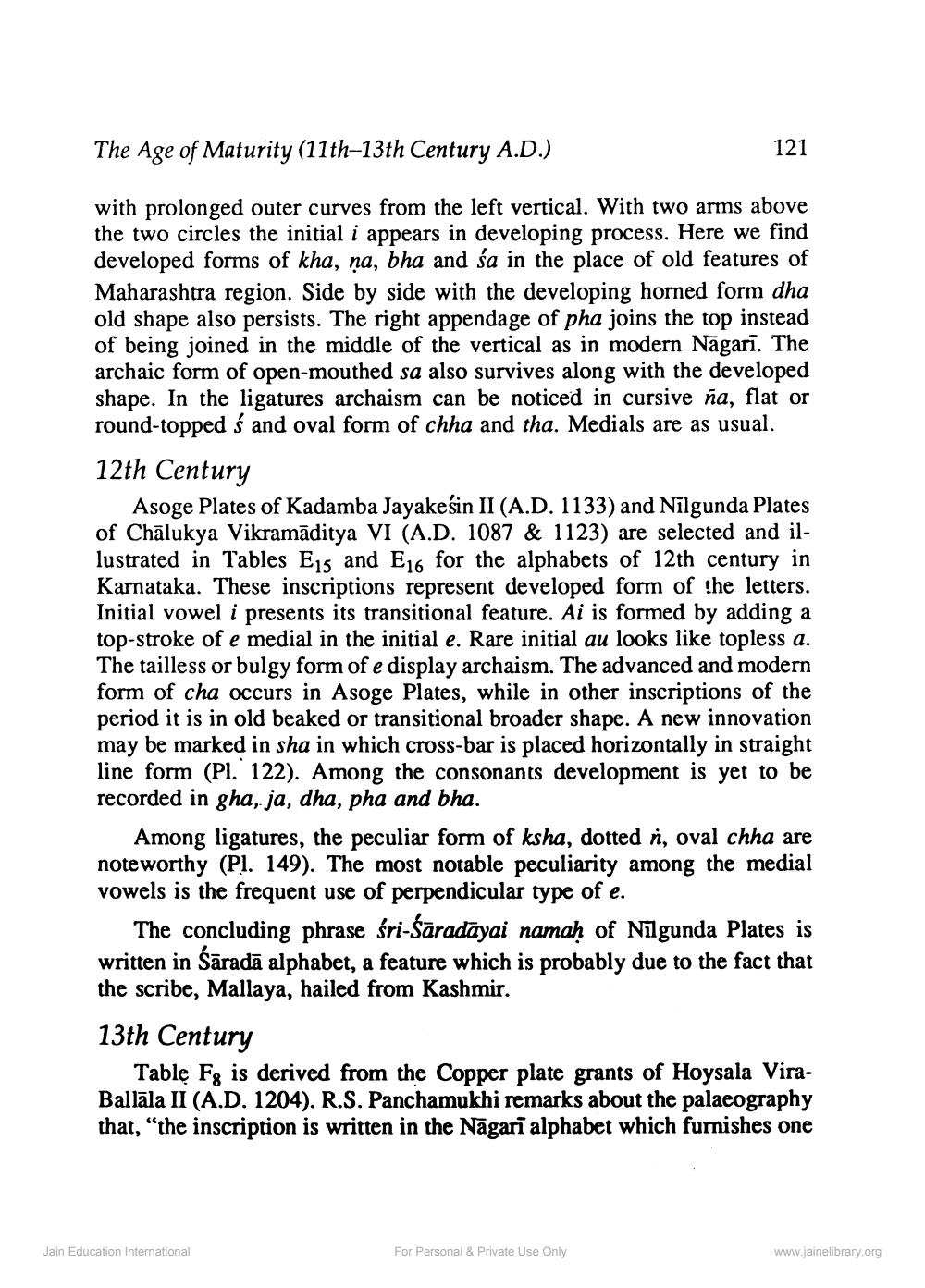________________
The Age of Maturity (11th-13th Century A.D.)
121
with prolonged outer curves from the left vertical. With two arms above the two circles the initial i appears in developing process. Here we find developed forms of kha, na, bha and sa in the place of old features of Maharashtra region. Side by side with the developing horned form dha old shape also persists. The right appendage of pha joins the top instead of being joined in the middle of the vertical as in modern Nāgarī. The archaic form of open-mouthed sa also survives along with the developed shape. In the ligatures archaism can be noticed in cursive ña, flat or round-topped ś and oval form of chha and tha. Medials are as usual.
12th Century
Asoge Plates of Kadamba Jayakesin II (A.D. 1133) and Nilgunda Plates of Chālukya Vikramāditya VI (A.D. 1087 & 1123) are selected and illustrated in Tables Eis and E16 for the alphabets of 12th century in Karnataka. These inscriptions represent developed form of the letters. Initial vowel i presents its transitional feature. Ai is formed by adding a top-stroke of e medial in the initial e. Rare initial au looks like topless a. The tailless or bulgy form of e display archaism. The advanced and modern form of cha occurs in Asoge Plates, while in other inscriptions of the period it is in old beaked or transitional broader shape. A new innovation
be marked in sha in which cross-bar is placed horizontally in straight line form (Pl. 122). Among the consonants development is yet to be recorded in gha, ja, dha, pha and bha.
Among ligatures, the peculiar form of ksha, dotted r, oval chha are noteworthy (Pl. 149). The most notable peculiarity among the medial vowels is the frequent use of perpendicular type of e.
The concluding phrase śri-Śāradayai namaḥ of Nīlgunda Plates is written in Sāradā alphabet, a feature which is probably due to the fact that the scribe, Mallaya, hailed from Kashmir.
13th Century
Table Fg is derived from the Copper plate grants of Hoysala ViraBallāla II (A.D. 1204). R.S. Panchamukhi remarks about the palaeography that, "the inscription is written in the Nāgari alphabet which furnishes one
Jain Education International
For Personal & Private Use Only
www.jainelibrary.org




